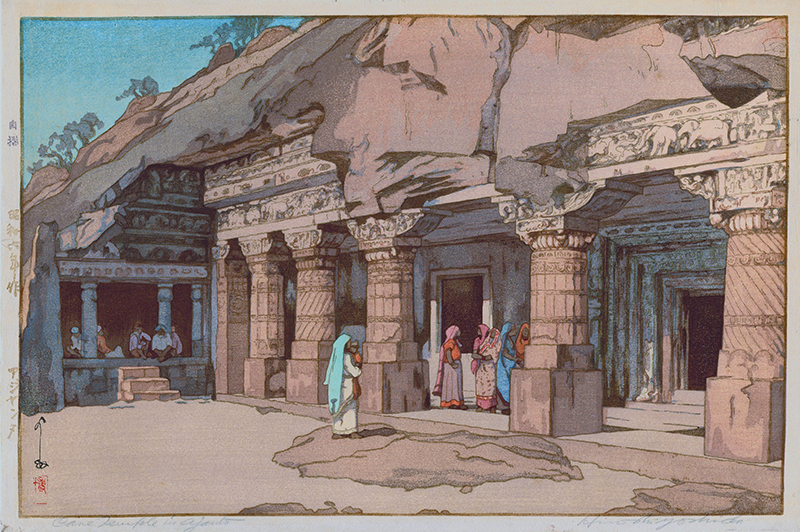
19th, 20th & 21st Century Fine Prints
707-546-7352 · fax 707-546-7924 · web: www.annexgalleries.com · email: artannex@aol.com
Cave Temple in Ajanta by Hiroshi Yoshida

Cave Temple in Ajanta
Hiroshi Yoshida
Cave Temple in Ajanta
Hiroshi Yoshida
1876 - 1950 (biography)According to the Sanseido catalogue of 1939 "Cave Temple in Ajanta" (#155) is from the series of woodcuts known as the India and Southeast Asia series. Yoshida used 14 blocks and a total of 38 impressions to achieve this image. The blocks for this image were cut by Maeda. According to the Toledo catalogue the initial edition was 100.
The first Buddhist cave monuments at Ajanta date from the 2nd and 1st centuries B.C. During the Gupta period (5th and 6th centuries A.D.), many more richly decorated caves were added to the original group. The paintings and sculptures of the 29 Cave Temples at Ajanta are considered masterpieces of Buddhist religious art, have had a considerable artistic influence. The facade of this cave (No 1) is famous for its superb 6th century frescoes.
